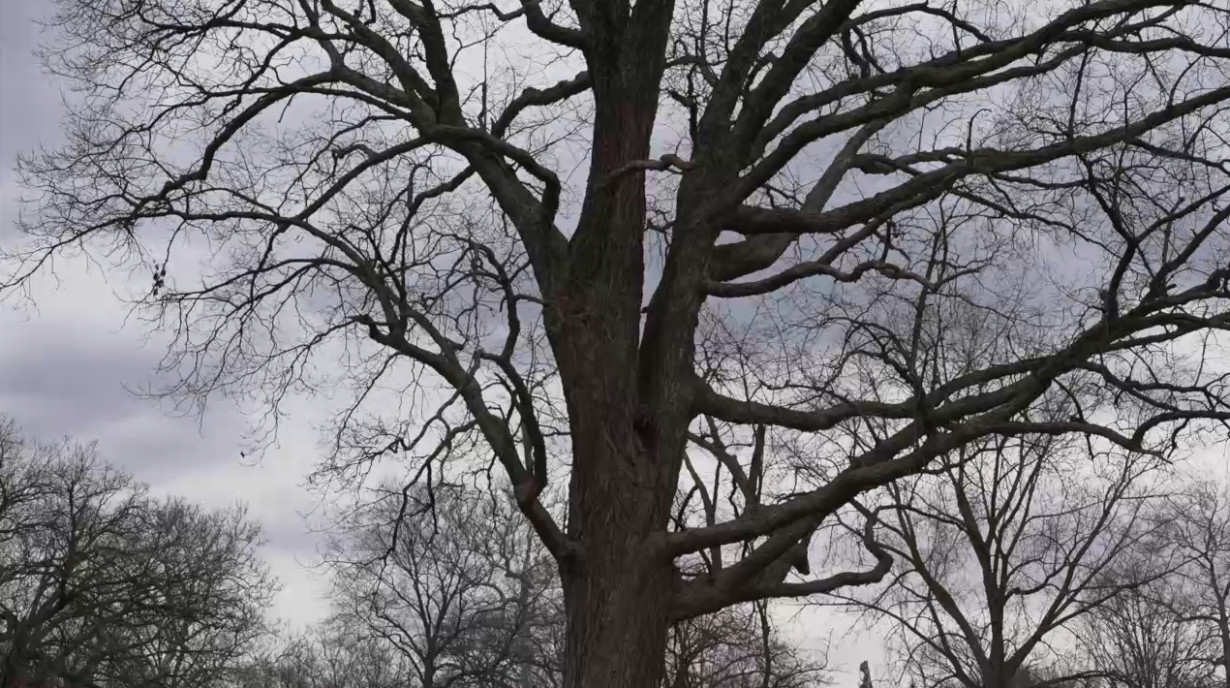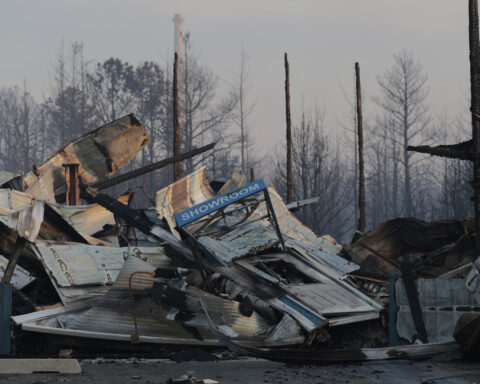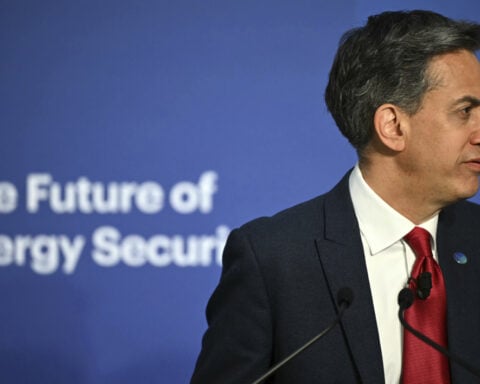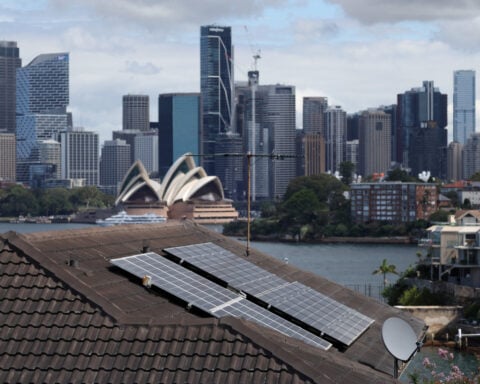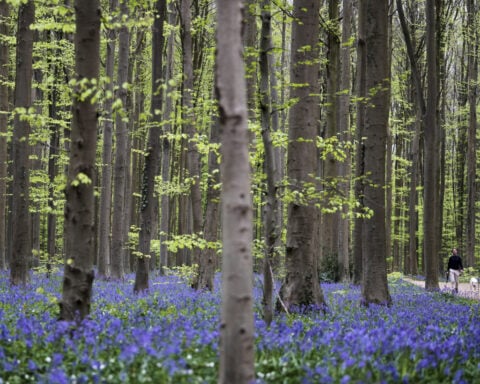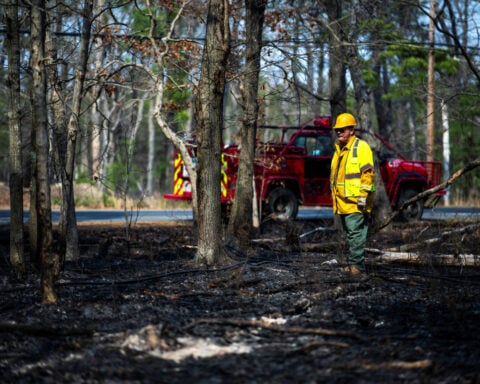STERLING HEIGHTS, Michigan (WXYZ) -- Some residents in Sterling Heights are hoping to save a centuries-old tree from being chopped down in favor of housing.
On Van Dyke Avenue just south of Canal Road in Sterling Heights, you can find a field with several towering trees.
One tree that especially catches the eye of residents like Emily Young is an 88-foot-tall chinquapin oak that's estimated to be somewhere around 250 years old, according to leaders with the Michigan Big Tree Program.
"This tree is from about the year 1750, before Sterling Heights. We had Native Americans still living in this area," Young said. "And it is the seventh-largest chinquapin in the state of Michigan."
According to the Chaldean Community Foundation's website, at the property, they are planning to build an 82-unit apartment complex along with retail space. The project could put the tree's future in jeopardy.
"It breaks my heart because we are a society that values our heritage and it is disappearing at an alarming rate. Once it's gone, there's no do-overs," Young said.
There's also concerns about how cutting the oak down could disrupt other forms of nature.
"Oaks support more life as a tree species than any other tree species in North America," Mark Graf, a Sterling Heights resident, said.
In response, Young has created an online petition to show support for preserving the tree. As of Monday, it had over 1,700 signatures, and petitioners hope it sends city leaders a message.
"I know they can change zoning, I know they can vote," Young said.
The city of Sterling Heights responded to the concerns in a statement:
"Change can be difficult, especially when it involves the removal of a cherished tree. Trees add beauty, shade, and character to our neighborhoods, and we all value the natural environment that makes our community special.
At the same time, responsible municipal planning requires balance. The same thoughtful development that once made room for our existing homes, parks, trails, and even the local businesses and jobs we enjoy today also involved difficult decisions about land use. In this most recent case involving the North Van Dyke Avenue corridor, the new development in question will provide much-needed housing for residents who want to be part of our great community, supporting a thriving future for all.
Sustainability is a cornerstone of the Sterling Heights Vision 2040 Plan which aims to maintain a city that is sustainable and environmentally responsible. This is evidenced by the City's Think Sterling Green umbrella brand for many different sustainability initiatives undertaken by Sterling Heights in the past 2-3 years including, but not limited to: celebrating nearly 40 consecutive years with the Arbor Day Foundation "Tree City USA" designation, conducting a citywide tree inventory, plans to create green microforests and reforest the city with 18,000 new trees, and a robust tree preservation ordinance applied to all city development projects. Smart Growth initiatives centered on sustainability have enabled the City to revitalize areas like North Van Dyke and the former Lakeside Mall with projects that are far more environmentally friendly then when first developed years ago.
The Master Plan for North Van Dyke was developed after significant public input to revitalize an area that has been experiencing vacancies and varying degrees of blight for many years. The Master Plan includes Smart Development initiatives consisting of new pathways along the river, open space preservation, expanded pedestrian walkways, a lineal sculptured art park, roadway improvements and redevelopment of underutilized and vacant buildings. This development includes 10.5 acres, of which eight acres will be preserved as open space. The two acres being developed will be along the roadway, which is mostly void of trees. This $30 million development, along with others outlined in the North Van Dyke Master Plan, will help generate tax revenue necessary to fund the aforementioned amenities in the area including open space preservation, riverwalk and pedestrian connectivity and parks.
Our tree preservation ordinance, one of the strongest in the state of Michigan, will apply to this development. As part of the review process, the City Planning department works with engineers, land owners and developers to minimize potential environmental impacts. When unavoidable impact occurs, such as tree removal, we rely on our robust tree preservation ordinance to create the necessary land use balance by requiring the developer to replace any "landmark" trees removed with new trees, inch for inch. In the long run, the large number of replacement trees (in addition to required landscaping trees) will aid in increasing the City’s overall tree canopy, bolstering the amount of carbon that is sequestered and resulting in reduced greenhouse gas emissions. Because of our tree preservation ordinance, if this tree ends up requiring removal, the developer will be required to replace it inch for inch with roughly 20 new trees.
Sterling Heights remains committed to smart, sustainable growth—investing in green spaces, tree-planting initiatives, and thoughtful community design that ensures both progress and preservation so that we remain a community that is welcoming, vibrant, and environmentally responsible."
- City of Sterling Heights
Despite the potential for new trees, residents believe the oak is irreplaceable.
"It might be replaced by a lot of little saplings. If they survive, they're not helping the environment like this oak is doing today for 20, 30, 40, 50 years," Graf said.
In a statement, Martin Manna, president of the Chaldean Community Foundation, also responded to worries about the trees at the property.
"We understand the concerns of the residents of Sterling Heights and always strive to be good neighbors. The new development is still in the planning phases. As such, we are always looking at all options aimed at preserving nature, including the implementation of some 15 acres of trees and greenways."

 Trump has begun another trade war. Here's a timeline of how we got here
Trump has begun another trade war. Here's a timeline of how we got here
 Canada's leader laments lost friendship with US in town that sheltered stranded Americans after 9/11
Canada's leader laments lost friendship with US in town that sheltered stranded Americans after 9/11
 Chinese EV giant BYD's fourth-quarter profit leaps 73%
Chinese EV giant BYD's fourth-quarter profit leaps 73%
 You're an American in another land? Prepare to talk about the why and how of Trump 2.0
You're an American in another land? Prepare to talk about the why and how of Trump 2.0
 Chalk talk: Star power, top teams and No. 5 seeds headline the women's March Madness Sweet 16
Chalk talk: Star power, top teams and No. 5 seeds headline the women's March Madness Sweet 16
 Purdue returns to Sweet 16 with 76-62 win over McNeese in March Madness
Purdue returns to Sweet 16 with 76-62 win over McNeese in March Madness
